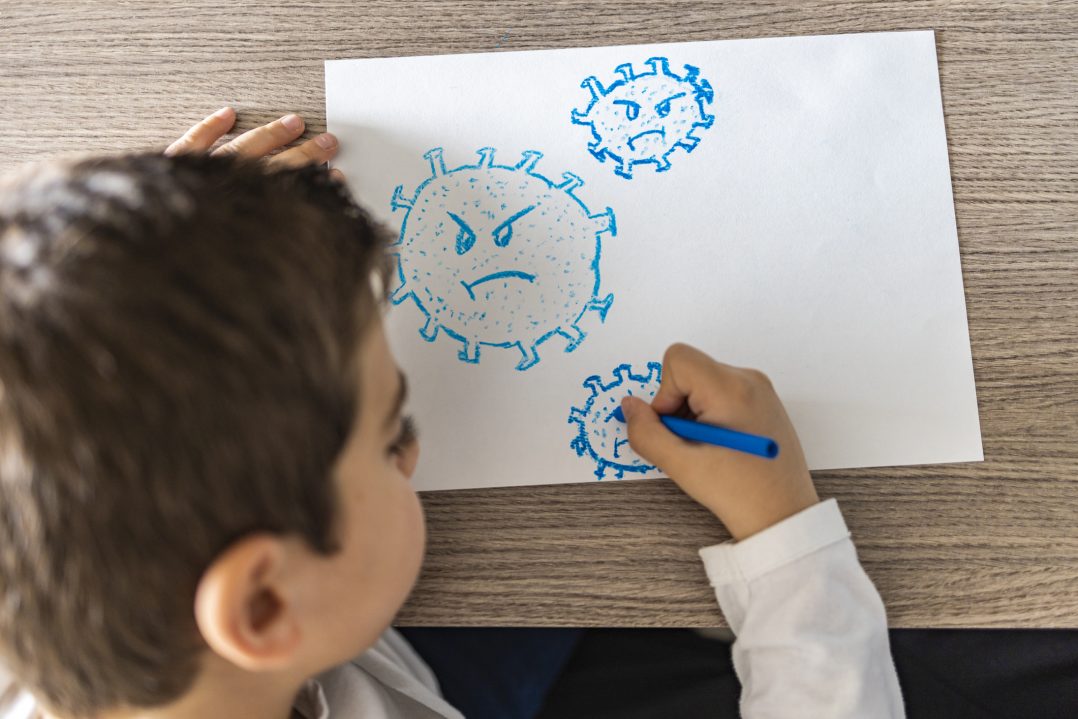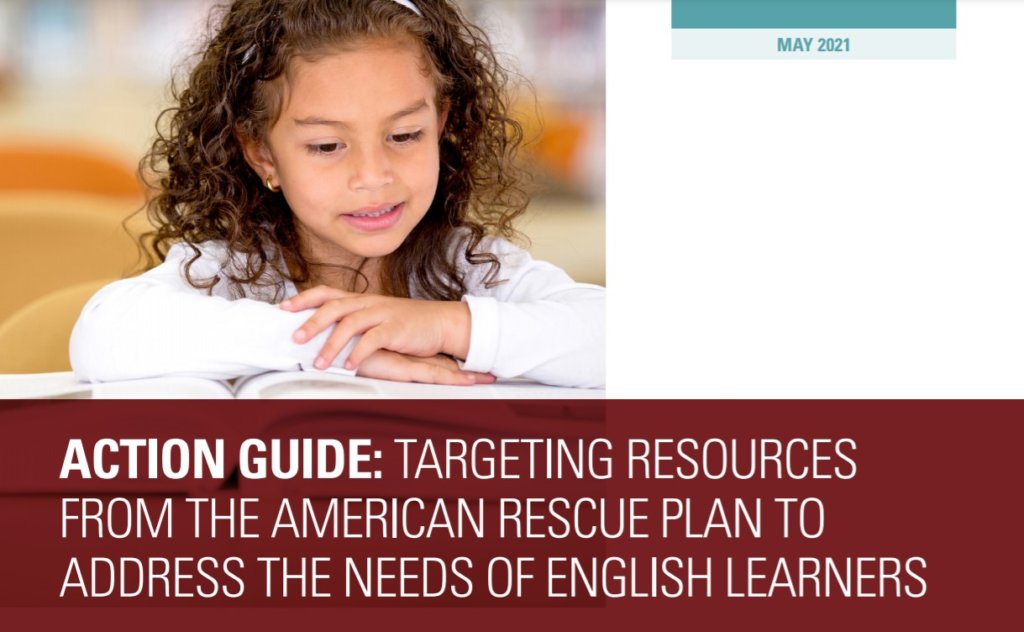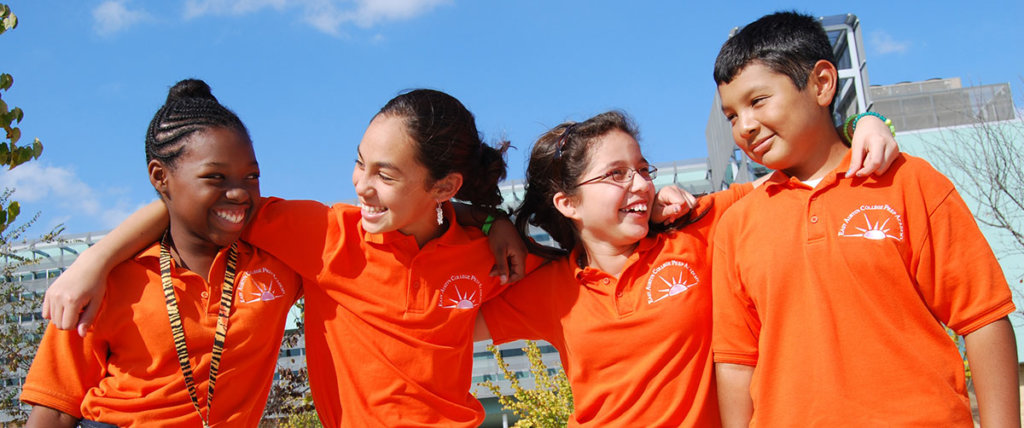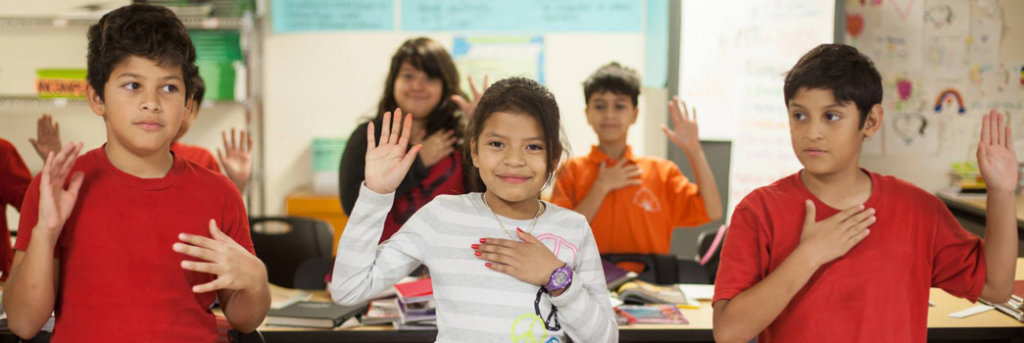Spotlight on Florida:
Navigating Back to School in a Coronavirus Hot Spot
As a country, we are facing an impossible choice when it comes to our nation’s children. Send our kids to school and risk exposing them, their classmates, their teachers, and our families to the coronavirus. Keep them home and spend half of our time (and theirs) trying to figure out how to get them online and then keep them there.
As YWCA USA CEO Alejandra Y. Castillo said during a session on the future of education and the workforce at this month’s 2020 UnidosUS Annual Conference, pre-pandemic data from Pew Research Center shows that an increasing number of Latino students have gained access to the internet. However, the COVID-19 pandemic has thrown into sharp relief that large numbers of Latino students still lack access to a computer, a tablet, or a reliable high–speed internet connection.
These are the unfortunate choices so many families are facing as the school year starts, and there’s no easy solution. However, UnidosUS has been analyzing and sharing information about the educational outlook across the country and offering best practices for navigating this unchartered territory.
SCHOOL REOPENINGS IN FLORIDA
One of the most controversial reopening plans is taking place in Florida where almost 40,000 children have tested positive for COVID, according to the state health department. Almost 30,000 of those identified as pediatric COVID-19 cases are from ages 5-17.
On May 28, the state’s Department of Education (DOE) announced its nearly three million K-12 students would be expected back in their physical classrooms five days a week. But the DOE did say parents could opt to keep their kids home, without explaining what remote instruction they would be able to access. These contradictory provisions are contributing to the confusion for districts, teachers, and parents about reopening decisions.
The state’s own plan acknowledged the risks involved in this approach, especially for underserved students, who account for the bulk of Florida’s public school population. In fact, Florida’s public K-12 students are 33.9% Latino, 21.9% Black, and 62.7% low-income. An estimated 14.1% have special needs, and 10.2% are English learners (ELs).
“Latinx and Black families, due to the many systemic inequities they are burdened with, are disproportionately impacted by the pandemic. Federal investments are needed in order to narrow opportunity gaps for these students and other vulnerable students such as students who are low-income, ELs, and students with disabilities,” says UnidosUS Policy Analyst Raisa Sequeira. “If Congress passes a stimulus bill that puts the needs of students first and doesn’t condition funds on the physical reopening of schools, Florida schools can bolster their campuses to be safer and provide the resources needed to address the digital divide that these students experience.”
Some of the Florida DOE recommendations are simply a matter of following widely publicized health recommendations. For instance, the DOE speaks of promoting a “culture of risk reduction” by making sure schools work with families to disseminate the latest information on the virus and how they can take precautions against it. It suggests this can even start with teaching proper hygiene as part of current health content.
But other measures may prove far more challenging to an already overcrowded school system. For example the Florida DOE recommends that desks be positioned at a distance from each other, but it’s unlikely most classrooms can attain a distance of six feet, the range Centers for Disease Control has been promoting as the gold standard for physical distancing in any public space. Should a student test positive, spaces should be identified for them to self-isolate.
Florida Governor Ron DeSantis has repeatedly stated he wants all kids back in the classroom, and on July 6, Florida Commissioner of Education Richard Corcoran issued an emergency order that said: “Upon reopening in August, all school boards and charter school governing boards must open brick and mortar schools at least five days per week for all students, subject to advice and orders of the Florida Department of Health, local departments of health.” Corcoran has since pulled back, noting that some amount of distance learning may be up to the school districts. In fact, the Florida DOE is encouraging school districts and families to build out such accommodations on a case-by-case basis, in consultation with their county health department.
But therein lies the problem says Jared Nordlund, UnidosUS Florida State Director.
“County health officials are not county employees, they’re state employees,” he says, noting that many civil rights advocates say this could deter these employees from saying anything that counters the governor’s back-to-school plans.
“As a mother, I can tell you, my kids will stay home. I don’t feel it’s safe. The numbers are huge,” says Maria Garavito, who works for UnidosUS Affiliate Hispanic Services Council (HSC) as the project director of La Red de Padres Activos (The Network of Active Parents), which is based on UnidosUS’s own parent engagement program Padres Comprometidos.
But she’s worried about the parents who have no choice.
“The only thing we can do is get them connected and have them engaged with us. We’re doing all we can to explain how their schools are going to work so that they can also teach the kids what they have to do before sending them to school,” says Garavito, who adds that HSC is doing this through a series of online videos, DVDs, and physically-distanced in-person workshops. “They have to be very conscious about it, so we try as much as possible to help them do that.”
UnidosUS’s other large Florida Affiliate, the Redlands Christian Migrant Association (RCMA), is equally as distressed. The organization serves several hundred students through charter schools in Hillsborough County north of Tampa and it did manage this spring to get computers and tablets to them so that they could learn remotely.
“But that’s just 200 students. That is not the majority,” says Lourdes Villanueva, RMCA’s Director of Farmworker Advocacy.
She would like to see more students in her communities receive devices so that they could choose that option, but she warns that getting them the devices is one thing. They still have to receive instruction on how to use them, and they have to navigate these problems across multiple languages.
“We’ve got families that do not speak English and we’ve got families that do not speak Spanish,” says Villanueva, noting that Florida has seen a large increase in indigenous migrants coming from predominately Mayan regions of Mexico and Guatemala.
Many of these problems could be best tackled by the counties themselves, Nordlund says, but he notes that the best way for them to do that is to give school districts the money they need to pay for it.
On August 4, UnidosUS sent a letter to DeSantis, Corcoran, and other state leaders requesting a meeting to outline policy recommendations that address these concerns ahead of schools reopening in Florida.
UnidosUS’s position is that Congress needs to act now to pass another relief package that provides critical funding for schools to safely reopen and that include targeted support for high need student populations like English learners. Since the CARES Act passed in March, the federal government has yet to enact another stimulus bill that includes education funding. The Senate’s so-called HEALS Act falls woefully short of addressing these needs, and negotiations continue to lag on Capitol Hill.
”Students, educators, school staff, and their families need immediate relief from Congress and the president to ensure learning safely continues during the pandemic and that our elected leaders do everything in their power to get the virus under control,” says Sequeira. “There’s no time to waste as the new school year is upon us. ”




